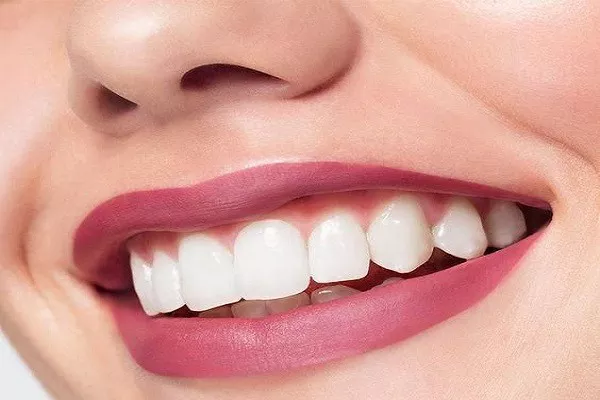Gum disease, also known as periodontal disease, is a common oral health issue that affects millions of people worldwide. It can lead to serious dental problems if left untreated. In this comprehensive guide, we will explore the causes, symptoms, and effective ways to cure gum disease. By the end of this article, you will be equipped with the knowledge and tools to maintain healthy gums and a radiant smile.
I. Understanding Gum Disease
Gum disease, or periodontal disease, is an inflammatory condition that affects the tissues surrounding your teeth. It typically begins with the accumulation of plaque, a sticky film of bacteria that forms on your teeth. Over time, if not removed through regular oral hygiene practices, this plaque hardens into tartar, leading to gum inflammation.
A. Types of Gum Disease
There are two primary types of gum disease:
Gingivitis: This is the mildest form of gum disease and is usually characterized by redness, swelling, and bleeding of the gums. It’s often caused by poor oral hygiene and can be reversed with proper care.
Periodontitis: When gingivitis is left untreated, it can progress into periodontitis. This stage involves the loss of bone and connective tissue supporting the teeth. If not properly managed, it can lead to tooth loss.
B. Common Symptoms
Identifying the symptoms of gum disease is crucial for early intervention. Look out for the following signs:
Bleeding gums when brushing or flossing
Swollen or red gums
Persistent bad breath
Gum recession, causing teeth to appear longer
Loose teeth or changes in your bite
II. Causes of Gum Disease
Understanding the root causes of gum disease is essential for effective prevention and treatment. Here are the key factors that contribute to the development of gum disease:
A. Poor Oral Hygiene
Inadequate brushing and flossing can lead to the buildup of plaque, which, if not removed, can evolve into gum disease.
B. Smoking and Tobacco Use
Tobacco use increases the risk of gum disease, hinders the body’s ability to heal, and reduces the success of gum disease treatment.
C. Genetics
Some individuals are genetically predisposed to gum disease. If your family has a history of periodontal disease, it’s crucial to be vigilant about oral health.
D. Medical Conditions
Certain medical conditions like diabetes and autoimmune diseases can make you more susceptible to gum disease. Proper management of these conditions is crucial for gum health.
III. Treating Gum Disease
Treating gum disease involves a combination of professional dental care and diligent at-home practices. Here are the steps to cure gum disease effectively:
A. Professional Dental Care
Dental Cleanings: Regular dental cleanings are essential for removing tartar buildup and monitoring your oral health. Your dentist will recommend the frequency of these cleanings based on your condition.
Scaling and Root Planing: In more advanced cases of gum disease, a deep cleaning procedure known as scaling and root planing may be necessary. This involves removing tartar and smoothing the root surfaces to prevent further bacterial growth.
B. At-Home Care
Proper Brushing and Flossing: Brush your teeth at least twice a day and floss daily to remove plaque and food particles.
Antimicrobial Mouthwash: Use an antimicrobial mouthwash to reduce bacteria and freshen your breath.
Quit Smoking: If you’re a smoker, quitting can significantly improve your chances of gum disease treatment success.
C. Lifestyle Changes
Balanced Diet: A diet rich in fruits and vegetables can boost your immune system and support gum health.
Stress Management: Chronic stress can weaken your immune system, making it harder for your body to fight gum disease.
IV. Prevention Is Key
Preventing gum disease is easier than curing it. Here are some strategies to maintain healthy gums and prevent gum disease from occurring in the first place:
A. Regular Dental Check-Ups
Schedule regular dental check-ups and cleanings to catch any issues early.
B. Maintain Good Oral Hygiene
Consistently practice proper oral hygiene by brushing, flossing, and using mouthwash.
C. Healthy Lifestyle Choices
Adopt a healthy lifestyle, including a balanced diet and stress management techniques.
D. Avoid Tobacco
If you’re a smoker, seek support to quit smoking, and reduce your risk of gum disease.
E. Know Your Risk
If you have a family history of gum disease or underlying health conditions, be proactive in your oral health care.
Conclusion:
Gum disease can be a serious threat to your oral health, but with the right knowledge and proactive measures, it’s entirely curable and preventable. By understanding the causes, symptoms, and treatment options, you can take control of your gum health and enjoy a lifetime of healthy, beautiful smiles. Remember, early intervention and consistent oral care are your best allies in the battle against gum disease.
Related Links:
How to fight gingivitis fast?
How to prevent gingivitis from getting worse?
How to get rid of bleeding gums naturally?






























